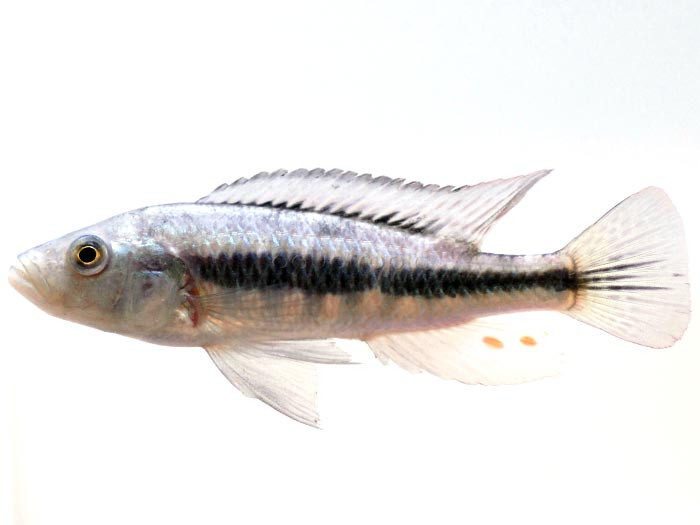Mutumbi Hunter (Lipochromis sp.)

One of the more mysterious fishes available to freshwater aquarists is a small, colorful cichlid that was originally native to Lake Victoria and which may or may not be extinct in the wild. The Mutumbi Hunter belongs to the genus Lipochromis, but, even though it has been available from aquarium breeders for a while now, this species has yet to be scientifically described. Unfortunately, this may now be one of the many endemic species from this African lake which has been driven to extinction by the highly invasive Nile Perch.
Aside from its great rarity, the Mutumbi Hunter offers aquarists the chance to own a deviously murderous fish. Lipochromis are paedophages—they consume the eggs and juveniles of mouthbrooding cichlids. The hunting strategy is said to differ among the species which have been investigated. One technique, as employed by L. melanopterus, is to grab their prey by the mouth and then directly suck any juveniles or eggs into their own mouth. But aquarium observations of the Mutumbi Hunter suggest that they instead ram the underside of their prey’s thorat, forcibly expelling any juveniles contained therein.
As with most cichlids, males are the fairer sex, adorned here with a beautiful blue sheen across the body, accented with red highlights on the fins. Males also possess a pair of egg spots on the anal fin, which are thought to entice the females towards the genital opening of the male, better enabling fertilization of any eggs present in the female’s mouth. Females tend to be mostly grey, as is typical with African cichlids.
This species is fairly simple to propagate in an aquarium, provided the fry have adequate hiding places. Males with quarrel amongst themselves for the right to breed, and a clear hierarchy will quickly develop, with the largest and most-colorful gentleman asserting its dominance. With a maximum size of around 5 inches, this species can be housed in modestly sized accommodations and can be safely mixed with a variety of semi-aggressive fishes, including other cichlids from the African rift lakes. Hard, alkaline water is recommended, but, otherwise, there is little challenge to keeping this rare (and possibly extinct) species.